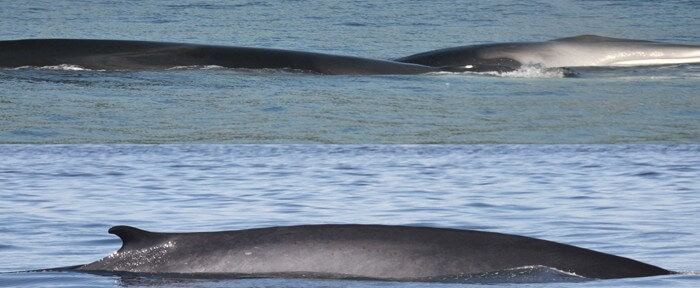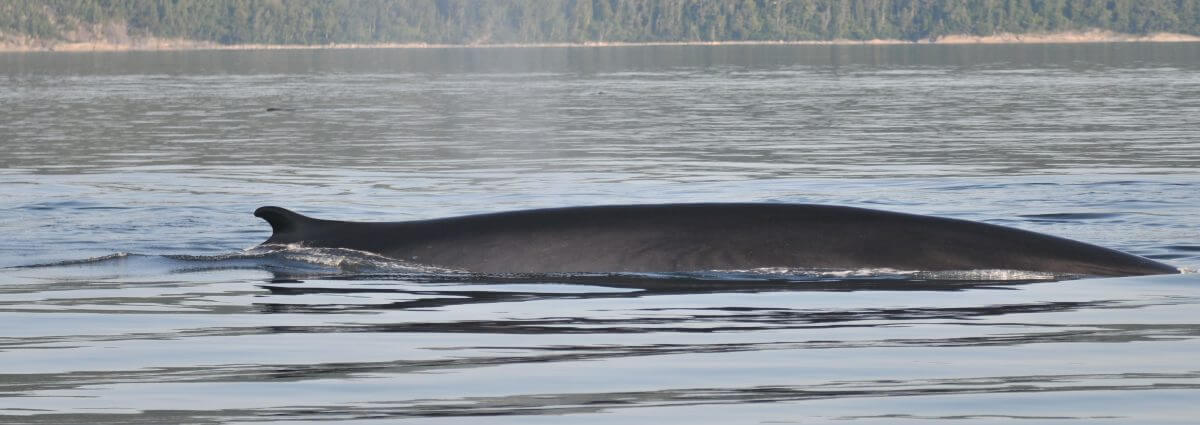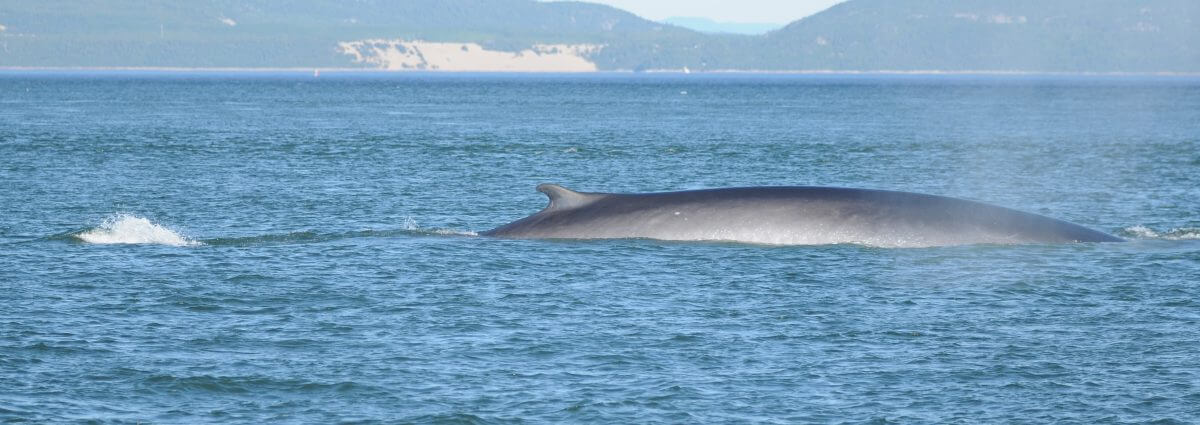Bp030
Fin Whale


-
ID number
Bp030
-
Sex
Unknown (possibly female)
-
Year of birth
Unknown
-
Known Since
1991
Observations history in the Estuary
Years in which the animal was not observed Years in which the animal was observed
Latest news from the publications Portrait de baleines
This fin whale is a regular in the Estuary, having been photographed 17 years out of 22 since it was first observed. Nevertheless, it is not a very well known “face” due to the subtleness of its distinctive marks: a particular curve at the top of the dorsal fin, slight notch at the top and bulge at the base of the said fin, right chevron with sharp contours and a thin scar on the right side of the peduncle. A well-trained eye and good photos are essential!
Bp030 surprised GREMM researchers on July 29 when it showed up off the coast of Les Bergeronnes with a young calf at its sides. In the days that followed, Bp030 was sighted again by the GREMM and whale-watching boats, always accompanied by the young. Was Bp030… a mother? Its sex has not yet been confirmed by genetic analysis and it had never previously been observed with a calf. On the other hand, it is a large fin whale, and in this species, females are 5 to 10% larger than males.
Another clue that it is possibly a mother: Bp030 is visibly thinner this year, as revealed by the marked contour of her vertebral column; this is perhaps the result of the extraordinary investment that nursing represents for a whale. Intense and efficient, nursing provides milk that is high in fats, which the female draws from her subcutaneous reserves. As births usually take place in winter and nursing lasts 6 to 8 months, Bp030 should be about to wean this calf, who will then be independent.
Fin whales have a life expectancy 80-90 years. The young animal seen accompanying Bp030 might be plying the waters of the St. Lawrence for many moons to come! Will we recognize it? Tough to say, as it seems that young fin whales change a great deal as they reach adulthood. To be continued!




